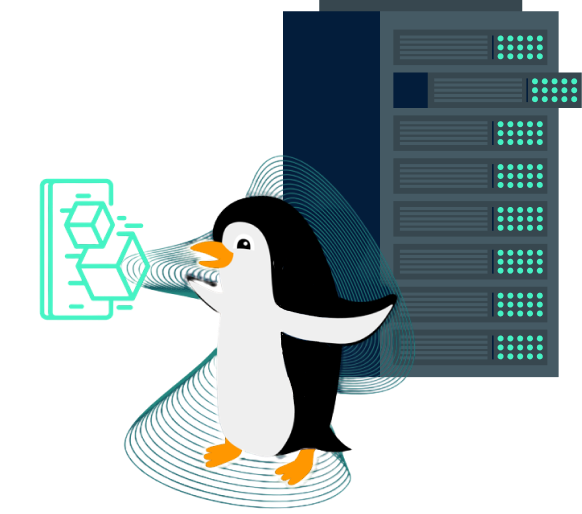Simple, Reliable, and Repeatable Patching for Linux


Enable your team to focus on high-value tasks by automating patch remediation for Linux.
Eliminate patching blindspots and speed up your patching operations.
Enhance your organization’s security & compliance posture.
RedHat, CentOS, Ubuntu, Oracle Linux, Amazon Linux…we’ve got you covered!
Supported Across All Linux Platforms
LINUX PATCH MANAGEMENT: AN OVERVIEW
Patch management on Windows servers can be a fairly straightforward process, however, it lacks a sense of variety and customizability. On the other hand, Linux is powerful, stable, built on open source, and almost infinitely customizable. Upgrading your Linux patch management experience is possible by choosing a wide range of Linux flavors. These flavors are known as distributions, and help establish broad and granular control over your environment.
Each distribution has its own pros and cons, and this only increases when it comes to the technicalities of patching and updates. While Windows maintains significant control over its patching process, with Linux, it is not as clear-cut. This distinction is an important one, as fixing bugs and software issues is critical when remediating vulnerabilities.
IS SYSTEM ADMINISTRATION THE REAL CHALLENGE?
In lieu of a rapid increase in Linux servers over the past few years, hackers have shifted their focus to exploiting threats. This has made keeping up with Linux patch management a serious challenge to IT organizations. But with distributions like CentOS, Ubuntu, Oracle and Amazon Linux 2, most Linux servers are fairly secure. This, unfortunately, is not the crux of the problem.
With the sheer complexities that surround Linux patch management, many IT organizations assume the problem lies with “simple system administrator incompetence”. A plethora of information and systematic tools do make the process easier, but far from completely optimized.
LINUX PATCH MANAGEMENT CHALLENGES
So why is Linux server patching a complicated endeavor for organizations the world over? Well, for starters, patching on Linux servers include three key phases from an operational standpoint:
- Scanning endpoints for missing patches
- Downloading patches from vendor sites
- Deploying patches to endpoints
Unlike with Windows, where patches are released in a streamlined manner through the Microsoft Security Response Center, with Linux, there are numerous vendor sites to consult. This is especially the case if you’re running more than a single distribution, where the timing is nowhere near predictable.
HOW JETPATCH SOLVES ADDRESSES THESE CHALLENGES
Effective Patch Testing
Problem:
Since a single defective patch is sufficient to ruin the entire operation, IT security teams face the dire challenge of ensuring timely updates and tests. They also hit a wall when expected to run numerous testing cycles and validate pilot groups, as this keeps them from updating the system. Subsequently, this leads to an increased room for error and a waste of valuable time.
Solution:
With the provision to automatically execute thousands of end-user validation tests, Linux patches can be cleared for production with JetPatch. This helps significantly reduce errors and avoid costly delays. Additionally system admins can save countless hours on every patch cycle, while ensuring they are properly validated before launch.
Scanner and Repo Data Mismatch
Problem:
Aligning your vulnerability scan results is an important aspect of Linux patch management. When IT teams are forced to decide whether to blindly trust results or resolve conflict, it may be tempting to accept the former. However, this may bring to rise a fresh problem that may take many days to manually solve.
Solution:
To eliminate these blindspots, JetPatch integrates existing scanners and security tool-stack, in effect creating a precise, seamless and automated process. Its deep API integration with popular Vulnerability Scanners can resolve this out of the box, thereby reducing the remediation timeline from days to an hour.
Repository complexity across distributions
Problem:
Consolidating multiple Linux repositories to reduce complexity is an efficient way to speed up the process. Maintaining separate repositories for each distribution takes up valuable time that delays the remediation process. Additionally, updating each OS using different tools, commands, and scripts, complicates things even further.
Solution:
Through JetPatch, tying together multiple repositories into a single repo helps simplify the process for all Linux distributions. Using intuitive patch automation, JetPatch gives you the power to master and optimize Linux operations, thereby saving precious time.
Patching Legacy Unix Systems
Problem:
Patching legacy machines can often be overlooked as they are time-consuming and often frustrating to IT teams. To add on, dozens of vulnerabilities take up too much time from the day, making patching every system impossible. Patching legacy UNIX systems also increases susceptibility to threats and may get in the way of other important security operations.
Solution:
JetPatch’s automated and scheduled patching process takes care of this drawback by ensuring that your patching is done consistently and securely. Countless hours can be saved on each patching cycle, and do more than a full team of system administrators.
Modernize Outdated Patching Process
Problem:
A time consuming process may hamper long-term high-value processes and tasks. Linux patch management in itself takes time and when it’s done on scattered and outdated platforms, it will take even longer.
Solution:
JetPatch helps eliminate patching blindspots and boost daily operations. By enabling you to get complete visibility at a granular level, time is spared to work on operations and tasks that require more attention.


